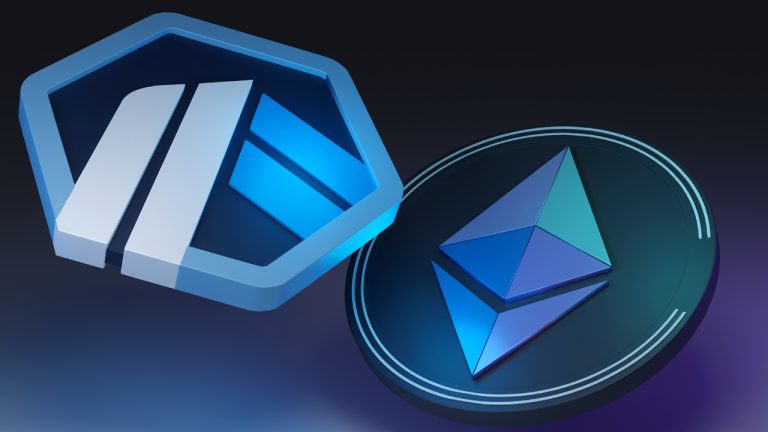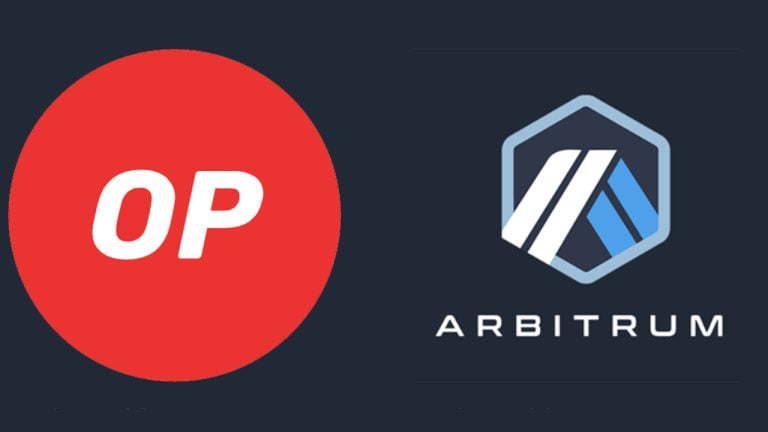
Unlock the full potential of blockchain with rollups, the ultimate scalability solution for faster, more affordable transactions.
Blockchain rollups are a scalability solution that processes and bundles several transactions off-chain before submitting them to the main blockchain, reducing congestion on blockchain networks.
Consider a busy checkout queue at a store. Blockchain rollups provide quicker processing by acting as a self-checkout lane. To reduce network congestion, they group transactions and manage them off the main blockchain. This reduces the cost per transaction and expedites the process.
Cosmos SDK is suitable for most of the current projects needs, and Cosmos could be in the limelight again, says Marko Baricevic.
The post ‘Cosmos is more than ever in the same conversation as many other projects’, says Binary Builders’ product lead appeared first on Crypto Briefing.
 In a recent deep dive into Ethereum’s future scalability and infrastructure, Ethereum co-founder Vitalik Buterin discusses the latest introduction of blobs and their significant role in the evolution of layer two (L2) rollups. This pivotal development marks a transition towards more efficient internal scaling and parallelization within Ethereum’s ecosystem, according to Buterin. Scaling Ethereum: Buterin […]
In a recent deep dive into Ethereum’s future scalability and infrastructure, Ethereum co-founder Vitalik Buterin discusses the latest introduction of blobs and their significant role in the evolution of layer two (L2) rollups. This pivotal development marks a transition towards more efficient internal scaling and parallelization within Ethereum’s ecosystem, according to Buterin. Scaling Ethereum: Buterin […]
MATIC price has retraced a majority of its recent gains. Cointelegraph explores why.
Polygon’s native token (MATIC) experienced a 16.4% rally that coincided with the launch of Polygon 2.0 Goreli testnet on Oct. 4. However, the resistance at $0.60 proved stronger than anticipated and was followed by a 10.6% decline over the six days leading into Oct. 10.
This decline was exacerbated by negative news regarding the departure of a key co-founder and weak activity in Polygon’s zero-knowledge rollup (ZK-rollup) subnet.

MATIC’s price has wiped out previous gains from the early October rally, erasing the bullish momentum driven by the expectations of the protocol’s upgrades.
Polygon 2.0 is a network of ZK-based layer-2 chains unified via a novel cross-chain coordination protocol. Polygon’s 2.0 scaling technology was unveiled in June 2023 as a plan for a scaling ecosystem consisting of four layers: staking, execution, interoperability and proving. Each of these layers contributes to creating an interconnected ecosystem of chains that facilitate secure, fast and highly cost-effective transfers.
Among the benefits of Polygon 2.0 are enhanced security and privacy through ZK-proofs, full compatibility with the Ethereum Virtual Machine (EVM) and instant cross-chain interactions without requiring additional security or trust assumptions. It’s worth noting that the project is continuing to develop its Zero-Knowledge Scalable Transparent Argument of Knowledge-based layer-2 solution, Miden.
One could argue that the recent 10.6% retracement merely reflects an adjustment to the overexcitement triggered by the testnet launch. However, other factors may have contributed to investors’ worsening sentiment toward Polygon. For instance, Polygon’s ZK subnet, zkEVM, has lagged behind competitors in activity and deposits.

Metrics from Artemis, an on-chain data provider, reveal a significant disparity between Polygon zkEVM’s 6,210 active addresses compared to StarkNet’s 154,390 and zkSync ERA’s 239,810. A similar discrepancy exists when analyzing the number of daily transactions, with Polygon’s ZK-rollup also trailing competitors.
Taking a broader perspective on the total number of transactions and deposits in the Polygon network yields suboptimal results. For example, Polygon’s total value locked (TVL) stands at $756 million, according to DefiLlama, which is less than half of Arbitrum’s layer-2 scaling solution.

It’s noteworthy that despite being launched much earlier than most Ethereum layer-2 solutions in June 2020, Polygon is now facing direct competition from Optimism and Base.
The departure of Polygon’s co-founder, Jaynti Kanani, on Oct. 4 after six years with the project also triggered some degree of discomfort among investors, given the project’s proximity to the crucial completion of its improved multiple-layer scalability solution. Interestingly, this decision follows the departure of Polygon Lab’s CEO, Ryan Wyatt, in July 2023, not long after joining the company in February 2022.
Further impacting MATIC’s performance was a decline in the number of active addresses using the Polygon network’s decentralized applications (DApps).

On average, the top 12 DApps on the Polygon network experienced a 17% decline in the number of active addresses over the last 30 days. This issue was particularly concerning in the NFT and decentralized finance markets, notably affecting applications like Uniswap, OpenSea and Move Stake.
Related: Circle rolls out native USDC tokens on Polygon
Regardless of the reasons behind MATIC’s token surge earlier in October, the recent 10.6% negative performance can be attributed to reduced network activity, the departure of a co-founder during a critical upgrade phase and stiff competition from other ZK scaling solutions.
Ultimately, there is enough bearish news flow to justify this correction, although the team has been consistently delivering the necessary updates and improvements to the Polygon network. Investors should closely monitor the project’s progress in addressing these challenges and capitalizing on the innovations of Polygon 2.0.
This article is for general information purposes and is not intended to be and should not be taken as legal or investment advice. The views, thoughts, and opinions expressed here are the author’s alone and do not necessarily reflect or represent the views and opinions of Cointelegraph.

Binance’s Ethereum layer-2 scaling platform, opBNB, is now publicly available, following extensive testing of the OP Stack-based platform.
The BNB Chain blockchain ecosystem is set to tap into Optimism’s rollup technology, powering its newly launched opBNB layer-2 scaling platform.
BNB Chain announced the public mainnet launch of its Ethereum Virtual Machine (EVM)-compatible L2, which delivers lower gas fees and faster transactions to decentralized applications running within the ecosystem.
The opBNB platform reportedly handled over 35 million on-chain transactions and saw more than 150 decentralized applications (DApps) deployed on its testnet. BNB Smart Chain also claims that the platform achieved a peak of 4,000 transactions per second during a stress test of its capabilities.
Related: Can the Optimism blockchain win the battle of the rollups?
BNB Chain senior solution architect Arno Bauer highlighted scalability and security as top priorities for the scaling solution while meeting stringent criteria:
“This included high availability, 4K transactions per second, rigorous stress testing, reduced gas costs under 0.2 gwei, fast finality under 1 second and enhanced security with multiple external audits.”
As Cointelegraph previously reported, opBNB is based on the Optimism OP Stack and is EVM-compatible, allowing it to interact with Ethereum-based smart contracts, networks and ERC-20 token standards.
This solution makes use of optimistic rollups to scale transactions by assuming that transaction data proven off-chain is valid until proven otherwise. The technology has been important in helping the Ethereum network scale, but critics highlight the week-long lockup of funds in these protocols, while validation checks are processed.
Optimism has seen significant growth in daily transaction volumes processed and an increasing number of active daily addresses, suggesting that the layer-2 solution continues to offer value to users and DApps.
A number of major decentralized finance (DeFi) protocols have also deployed on Optimism to harness its scaling capabilities. This includes the likes of Uniswap, Aave, 1inch Network, SushiSwap and Curve Finance.
Cointelegraph has reached out to BNB Chain to ascertain further details of opBNB’s development and other scaling solutions that may have been considered by the ecosystem.
Magazine: Recursive inscriptions: Bitcoin ‘supercomputer’ and BTC DeFi coming soon

ARB’s price slumps to a new low as a decline in TVL, a decline in active addresses engaging with its DApps and a general malaise across the crypto market take their toll.
Arbitrum has emerged as a leading contender within the Ethereum network’s layer-2 scalability solutions, boasting a significant total value locked (TVL) and notable activity. However, between Sept. 9 and Sept. 11, the price of Arbitrum (ARB) tokens experienced a sharp decline of 14.5%, marking its lowest point in history.
Investors are now eagerly seeking insight into the factors driving this movement and questioning whether Arbitrum still possesses the competitive edge, especially considering that irrespective of the ARB token performance, the network TVL exceeds $1.6 billion.

It is worth noting that the past week has been challenging for most cryptocurrencies, but among Ethereum’s scaling solutions, none experienced a drop exceeding 9%, except for Arbitrum.
One potential source of concern stems from the absence of any instances of fraud proof issuance since the launch of the Arbitrum mainnet in August 2021. Offchain Labs confirmed this information to Cointelegraph on Sept. 4. Developers, however, have explained that this situation aligns with the intended operation of the system, as validators with malicious intentions risk losing their entire stake. Consequently, this data is unlikely to have significantly impacted the price in the past week.
Additional factors that may help elucidate the recent price downturn are associated with governance proposals from Arbitrum's decentralized autonomous organization (DAO). The first proposal, posted on Sept. 2, aims to allocate up to 75 million ARB tokens from the project’s treasury to address “short-term community needs” for active decentralized applications (DApps) within the ecosystem. However, even if approved, this allocation represents less than 2% of the DAO treasury holdings and is unlikely to have triggered the ARB token price correction, regardless of one’s stance on the proposal.
Another governance proposal that has garnered attention was introduced on Sept. 9 by PlutusDAO. This proposal seeks to return tokens from the DAO treasury to ARB holders through the activation of a staking mechanism, creating a native yield for participants, which could involve up to 2% of the total supply annually. Nevertheless, some investors view this inflationary approach as unnecessary and argue that it only exerts downward pressure on prices.
im not a VC so i'd "benefit" from this but..
— PSY (@PSYTWEAK) September 10, 2023
dilution through inflation would be a PVP proposal, instead of trying to bring more value into the ecosystem it extracts it from other ARB holders
Arbitrum is in a good position all round, one of the most popular chains, huge… https://t.co/IDpcdQfQHT
As user Psy highlighted on the X (formerly Twitter) social network, “dilution through inflation” does not contribute positively to the ecosystem, as it merely distributes DAO treasury holdings.
Beyond token governance, there are also concerns related to liquidation risks on both centralized and decentralized exchanges that offer leveraged trading. For instance, Lookonchain has observed a whale withdrawing ARB tokens from the Aave lending platform and transferring some to Binance.
A whale who is long $ARB on #Aave is selling $ARB to repay the debt.
— Lookonchain (@lookonchain) September 11, 2023
Over the past 5 hours, the whale has withdrawn 5M $ARB ($3.85M) from #Aave and deposited 3.8M $ARB ($2.93M) to #Binance.
And the whale currently holds 8M $ARB ($6.16M).https://t.co/HpuZnHbap4 pic.twitter.com/qduKeWC4ul
The challenge with this analysis lies in the ambiguity of cause and effect. Typically, leverage long positions are compelled to close when token prices have already fallen, rather than the reverse. This underscores the importance of investors examining Arbitrum’s activity and deposit trends over the past couple of months, which could have potentially triggered the recent price performance.
Arbitrum's TVL has notably declined to $1.67 billion, marking its lowest level since mid-February.

This 25% decrease over the past two months raises several concerns, primarily indicating a loss of investor confidence. This downturn has the potential to reduce liquidity and undermine the project’s overall viability. Furthermore, it might deter new participants, impeding network growth and adoption.
Next, it's crucial to examine the number of active addresses within the network's top DApps.

There is a noticeable decline in 30-day active addresses, even among well-established DApps like Uniswap, 1inch, Radiant, SushiSwap and GMX. Therefore, when considering the decrease in TVL alongside reduced user activity, it becomes evident that there is a substantial decline in demand for the network. While pinpointing a singular cause for this movement is challenging, one can speculate that competing chains such as zkSync Era and Coinbase’s Base may have contributed.
The data suggests that Arbitrum’s 14.5% correction appears to result from a combination of investor dissatisfaction with the governance mechanism and the network’s lackluster activity, despite offering significantly lower fees compared to Ethereum. Unless there is an upswing in transactions and an expansion of its user base, it is unlikely that ARB will be able to close the price performance gap with its competitors.
This article is for general information purposes and is not intended to be and should not be taken as legal or investment advice. The views, thoughts, and opinions expressed here are the author’s alone and do not necessarily reflect or represent the views and opinions of Cointelegraph.
 Customizable rollup provider Eclipse announced that the startup is launching a scaling solution that is compatible with Solana and Polygon. Eclipse disclosed that the Layer 2 blockchain can run smart contracts on Solana, and decentralized applications (dapps) will be easily migratable to the Polygon Sealevel Virtual Machine (SVM). How Eclipse’s L2 Scaling Concept Hopes to […]
Customizable rollup provider Eclipse announced that the startup is launching a scaling solution that is compatible with Solana and Polygon. Eclipse disclosed that the Layer 2 blockchain can run smart contracts on Solana, and decentralized applications (dapps) will be easily migratable to the Polygon Sealevel Virtual Machine (SVM). How Eclipse’s L2 Scaling Concept Hopes to […]
One Ethereum bull hopes the launch will help onboard a host of other crypto companies and financial institutions onto Ethereum.
The Ethereum community appears to have taken a bullish view of Coinbase’s newly announced layer-2 network, Base, which has been described as a “massive confidence vote” and a “watershed moment” for the blockchain network.
Secured on Ethereum and powered by layer-2 network Optimism, Base aims to eventually become a network for building decentralized applications (DApps) on the blockchain. The layer-2 network is currently in its testnet phase, according to Coinbase CEO Brian Armstrong.
0/ Hello world.
— Base (@BuildOnBase) February 23, 2023
Meet Base, an Ethereum L2 that offers a secure, low-cost, developer-friendly way for anyone, anywhere, to build decentralized apps.
Our goal with Base is to make onchain the next online and onboard 1B+ users into the cryptoeconomy.https://t.co/Znuu3o3pJw
Members of the crypto community such as Ryan Sean Adams, host of the Bankless Show, believe the move “is a massive vote of confidence for Ethereum,” which could set a precedent for cryptocurrency companies and financial institutions to use Ethereum as the settlement layer of choice.
2/ This sets precedent that other crypto companies will follow, then Fintechs, then banks. Eventually the world will use Ethereum as a settlement and property rights system.
— RYAN SΞAN ADAMS - rsa.eth (@RyanSAdams) February 23, 2023
Coinbase has approximately 110 million verified users and has partnered with 245,000 companies in over 100 countries since it was founded in 2012. Its cryptocurrency exchange is the second largest in terms of trading volume, behind Binance according to CoinGecko.
“If Coinbase converts 20% of its 110m verified users to Layer 2 users in the coming years, this alone will 10x the total number of crypto native users,” Adams added.
Adam also commended Coinbase for opting to open-source Base and believes the new layer-2 network will bring about even more block space demand on Ethereum.
Coinbase just announced that they are launching a layer 2, named Base, on Ethereum and powered by Optimism.
— sassal.eth (@sassal0x) February 23, 2023
Ethereum is becoming the world's settlement layer.
Meanwhile, Sebastien Guillemot, co-founder of blockchain infrastructure firm dcSpark, suggested that Coinbase made a wise decision to go with a layer 2 as opposed to an independent sidechain, noting that “almost all” cryptocurrency transactions and value locked on Ethereum resides on layer 2s these days.
Coinbase announced Base, a new L2 (based on the Optimism L2)
— Sebastien Guillemot (@SebastienGllmt) February 23, 2023
L2s continue to dominate the industry
- Almost all txs in crypto are on L2s
- Almost all TVL in crypto are on L2s
- More devs working on L2s than basically every L1
Sidechains (which aren't L2s) are a waste of time
Ryan Watkins, the co-founder of crypto-focused hedge fund Syncracy Capital, described the news in a Feb. 23 tweet as a “watershed moment” in the Ethereum rollup ecosystem. He added that there was “likely no one better” positioned than Coinbase to onboard the next 10 million users and institutions to Ethereum.
Not everyone was bullish though.
Gabriel Shapiro, general counsel of investment firm Delphi Labs, explained in a Feb. 23 Twitter post that launching a centralized layer-2 network “opens the door” to unwanted SEC scrutiny.
Related: Coinbase beats Q4 earnings estimates amid falling transaction volume
“A centralized L2 that trades lots of tokens any number of which could be alleged securities, or does lots of DeFi transactions that arguably might alleged to be regulated (securities swaps etc), opens the door to the SEC making new kinds of secondary market claims,” wrote Shapiro, adding:
“imo, this will accelerate the SEC's "secondary market" agenda re: blockchain securities issues, because they can't let an SEC registrant "get away with" potential violations & build up a legal arbitrage strategy right under the SEC's nose.”
Shapiro’s concerns come as the SEC has recently upped its enforcement efforts against several stablecoin issuers and staking service providers of late.
Regarding the launch of Base, the lawyer opined that it could be a “bad step for them” and inflict “collateral damage” on the rest of the ecosystem, particularly in the event that the SEC finds a vulnerability to expose:
overall, if indeed Coinbase's motives are regulatory in nature, it's not only a bad step for them, but could threaten dangerous collateral damage to the rest of the ecosystem
— _gabrielShapir0 (@lex_node) February 23, 2023
if their motives are regulatory, they should've waited till all the infra can be really decentralized
 According to statistics recorded this week on Tuesday and Wednesday, the layer two scaling project Arbitrum’s transaction count has surpassed Ethereum’s. On Wednesday, Arbitrum processed 1,090,510 transactions, compared to Ethereum’s 1,080,839 transfer count. L2 Scaling Solution Arbitrum’s Daily Transfers Skyrocket Layer two (L2) scaling networks have become popular over the last two years as secondary […]
According to statistics recorded this week on Tuesday and Wednesday, the layer two scaling project Arbitrum’s transaction count has surpassed Ethereum’s. On Wednesday, Arbitrum processed 1,090,510 transactions, compared to Ethereum’s 1,080,839 transfer count. L2 Scaling Solution Arbitrum’s Daily Transfers Skyrocket Layer two (L2) scaling networks have become popular over the last two years as secondary […] Since The Merge, Ethereum’s onchain fees have been considerably lower. However, combined transaction volume on layer two (L2) chains Arbitrum and Optimism has outpaced Ethereum’s onchain transaction output. On Saturday, Jan. 14, 2023, Ethereum processed 1.10 million onchain transactions, while combined transactions on Arbitrum and Optimism reached 1.32 million for the same day. Rise of […]
Since The Merge, Ethereum’s onchain fees have been considerably lower. However, combined transaction volume on layer two (L2) chains Arbitrum and Optimism has outpaced Ethereum’s onchain transaction output. On Saturday, Jan. 14, 2023, Ethereum processed 1.10 million onchain transactions, while combined transactions on Arbitrum and Optimism reached 1.32 million for the same day. Rise of […]